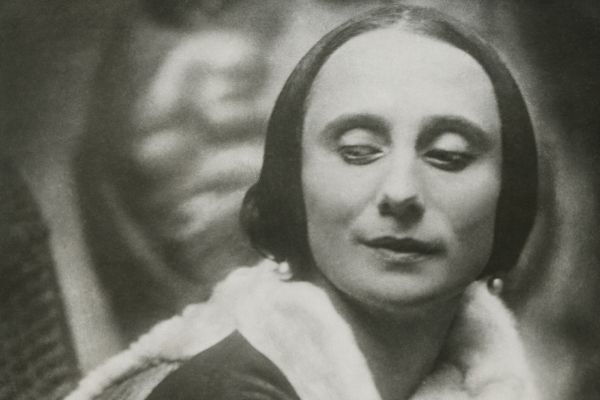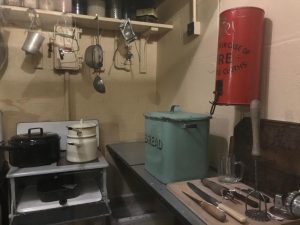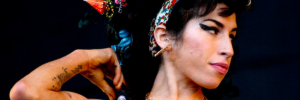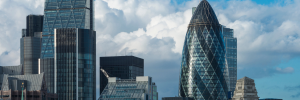Ballet in London has a long and storied history, dating back to the early 1800s. Today, the city is home to some of the world’s most prestigious ballet companies, including The Royal Ballet, English National Ballet, and The Sadler’s Wells Royal Ballet. For fans of the art form, there is no better place to be than London. Here, they can experience first-hand the beauty and grace of ballet.
When thinking of the names from London’s ballet world there is none bigger than Anna Pavlova; a name celebrated in the form of the Pavlova cake and the Pavlova by Payot perfume.
Anna Pavlova, one of the most celebrated ballet dancers of her time, enthralled London audiences with her performances in the early 20th century. A skilled and passionate performer, she brought a new level of artistry to the world of ballet. She spent a great deal of her time living and working in London and had a house on Hampstead Heath.
In fact, some of her most famous roles were performed right here in the city. For anyone who loves ballet or history, learning more about Anna Pavlova is a must. Keep reading to find out more about this fascinating woman and her connection to London. Her influence can still be seen in the work of today’s dancers and her legacy can still be seen on the streets of London today.

Before we get to where we can see Anna Pavlova’s legacy, let’s have a look at how she became the world-famous prima ballerina.
Born in Saint Petersburg, Russia in 1881, she began her dance training at the age of 10 at what is now known as the legendary Vaganova Academy of Russian Ballet. At the age of eighteen, Pavlova joined the Imperial Ballet Company in Moscow. A few years later, after graduating from the Academy with honours, Anna received an invitation to join the Marinsky Theatre’s troupe and so moved to Paris to study with First Ballet Master Marius Petipa. On the stage of the Marinsky Theatre Pavlova performed Giselle, Swan Lake, Sleeping Beauty, Don Quixote, Le Corsaire, The Pharaoh’s Daughter and La Bayadère.
In 1909, Pavlova made her debut as a soloist with the New York Metropolitan Opera Association and quickly became one of America’s most popular dancers. Concert halls and opera houses across the world applauded her. Monuments to the ballerina were erected long before her death.
On January 4, 1908, at a charity concert at the Marinsky Theatre Pavlova performed a miniature called The Swan, which was staged by her friend, partner and choreographer Mikhail Fokin. In this dance-monologue she was so organic and inimitable that she captivated the most discerning critics. The plasticity of movements and the bottomless sadness of the dance reflected the whole gamut of her accumulated feelings. Anna confessed her hopeless love to the whole world. Why hopeless? In short, Baron Victor Dandré. Her relationship with Baron Victor Dandré was tumultuous; a tragic and all-consuming love. Dandré was a descendant of a noble family and could not officially be connected with an ordinary ballerina.
What was the secret to Anna Pavlova’s success?
Anna expressed her pain in the only way she could – through dance.Her mysterious smile, incredible grace and phenomenal work ethic made Pavlova a true inspiration for everyone lucky enough to see her dance.
She moved to London in 1911, a dynamic forward-thinking, culture-consuming city which welcomed her to the stage. It was in London where she found happiness and her second home. In 1911 she founded her own dance company, The First Russian Ballet.
After the outbreak of World War I in 1914, Anna moved to the United Kingdom and began a new period in her life. London became a safe haven for her and a place where she finally had the long-awaited reunion with her loved one. In a luxurious mansion called Ivy House, just off from Hampstead Heath in Golders Green, a stronghold of art and science, Pavlova trained young ballerinas and rehearsed with the troupe, while also taking care of a garden and a pond, where her beloved swans gracefully glided across the water.
More images of Anna Pavlova:
A golden statue of Anna Pavlova in London
In 1911 she appeared on stage at the newly opened Victoria Palace and Alfred Butt, the theatre’s original owner, erected a statue in homage to her on the roof. The story goes that she refused to look at the statue when she passed by, as she was quite superstitious about it.
The statue shows Pavlova in a classical tutu in the arabesque position and was designed from studies from a photograph of the original statue. What happened to the original Anna Pavlova statue? Was she melted down? Or is she perhaps, as is so often the case, in someone’s garden?
The Swan later turned into the legendary The Dying Swan, and from that moment on, the prima ballerina of the Marinsky Theatre was recognised as the main star of Russian ballet.
Watch video of Anna Pavlova dancing The Dying Swan:
Anna Pavlova’s Swan Tutu
Anna was acquainted with Sergei Diaghilev – a major figure in the theatre world and a propagandist of Russian ballet in Europe at the beginning of the 20th century. In 1909, Pavlova was dazzling in his famous Ballets Russes in Paris, after which the entire world was open to her. Abroad she was called the “Russian Swan”. Anna parted with Baron Dandré, but while she was touring abroad, Victor was arrested. He was charged with taking a bribe. According to rumours, it was part of his efforts to make Pavlova a star.
Coincidence or not, it was at this time that Anna resigned from Diaghilev’s troupe. For a huge fee of £1,200 a week, the ballerina performed on the stage of the London’s Victoria Palace Theatre in an unexpected and shocking role. Tanned, in an outfit that revealed more to the audience than it should, with a crazy smile and great enthusiasm, she performed funny dances and participated in shocking stunts. She was in desperate need of money. London’s conservative public went to see the famous Anna Pavlova with surprise and great pleasure.

Anna performed in tandem with the brutally handsome dancer Mikhail Mordkin – their bright creative duet excited the interest of the audience and was all over the headlines. Even the prince of Wales and his family once attended a show.
In October of 1911, Anna agreed to Diaghilev’s offer and performed the title role in Giselle, when the Ballets Russes toured in London, delighting the British audience by appearing in a role worthy of her status of a great ballerina.
London welcomed the ballerina, and she, it seems, finally was in control of her own life. Pavlova and Mordkin were a sensation when they appeared together at the newly opened Palace Theatre, one of London’s leading music halls, in 1911. They first appeared in a classical pas de deux, performed with such style and beauty that they took ten curtain calls, an extraordinary number for a music hall. Nothing prepared the audience for what came next.
Pavlova was interested in local and national dances, and created works based on Japanese and Indian dance, in which she appeared with the young Uday Shankar.
They performed the Autumn Bacchanal, one of the most tempestuous and passionate dances ever staged, which showed another side to her passion for dance and expression. This was a dance that transmitted the Dionysian spirit of ancient Greece. Gone were Pavlova’s tutu and Mordkin’s ballet costume, gone her pointe shoes. In Greek tunics and sandals, they flung themselves across the stage. She became possessed, intoxicated, not just, as the dance indicated, by wine, but by the very movement itself. Her frenzy transmitted itself to the audience and those watching would shout to her as though they too were dancing the ancient orgiastic rite. Such qualities cannot be learned. As her teacher, Cecchetti, remarked, ‘I can teach everything connected with dancing, but Pavlova has that which can only be taught by God’.
In 1912 Pavlova appeared in the first Royal Variety Performance. She was very competitive and during a curtain call slapped the face of her partner, Michael Mordkin, because she thought he was getting more applause. It was also in 1912, with the fees she received for her performances, she was able to pay off Dandré’s debts and to save up for her own house, Ivy House,in the scenic Golders Green at 94-96 North End Road. The 19th century two-storey mansion had an old garden and a pond which was believed to have belonged to artist J. M. W. Turner.
Wide windows and spacious rooms of the mansion delighted the ballerina. Since constant tours did not allow her to rest for a long time, Anna especially appreciated the minutes of calm and solitude. Her favourite resting place was the living room, where a floor-to-ceiling window overlooked the garden. Pavlova transported some of the interior and dear things from St. Petersburg, and after 1914 she never returned to Russia.
Victor Dandré came to lvy House with forged documents, becoming Anna’s husband and impresario. They switched roles – now Anna set the rules. Dandré took over the household chores and dutifully listened to the numerous whims of his wife. There the ballerina set up her own studio, where she taught young students, rehearsed with the troupe and met with friends. Her main inspiration was the swans in the pond and, in particular, her favourite swan, Jack, with whom the ballerina loved to pose for photographs.
It was from Ivy House where ballets were conceived and rehearsed and sets and costumes were made and stored. Frequent articles and features appeared in papers and magazines, showing pictures of her entertaining friends and ‘relaxing’ for the cameras where she spent nearly 20 years.
Watch a video of Anna Pavlova at Ivy House:
Anna Pavlova’s life ended in The Hague on January 23, 1931, where she was on tour and caught a bad cold. According to legend, her last words were to her dresser telling her to get her Dying Swan costume ready. The art world lost a great artist, but Dandré grieved most of all. The two lovers are still together – urns with their ashes are in the Golders Green Mausoleum.
It is perhaps Anna Pavlova, more than any other dancer, who epitomises the image of the 20th century ballerina: the dark expressive eyes; the pale oval face surrounded by severely dressed dark hair; an elegant figure with an almost religious dedication to dance. Anna Pavlova believed that it was her mission to take ballet to the world.
There is something about Ivy House that seems to call out to dancers. Today, the house still stands as a reminder of Pavlova’s legacy – and is now a school. There is a plaque and a ballerina statue to remind everyone passing of its former resident.
Anna Pavlova captivated audiences everywhere with her artistry and her passionate commitment and inspired a whole generation of girls to take up ballet.
Hear more about Ballet in London on our London History podcast.



